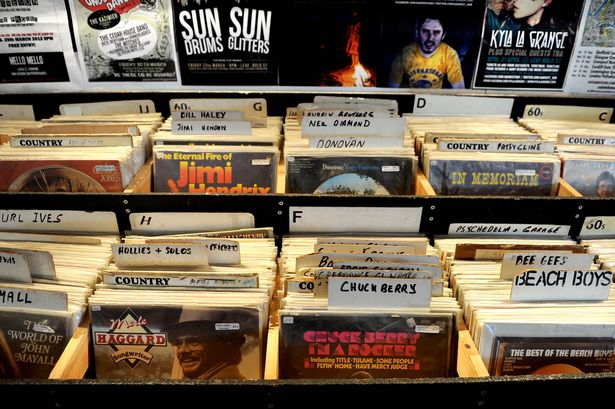
 The revolution will not be digital
The revolution will not be digital
Other | Friday 22nd January 2016 | Renée-Láuren
Over the months following Christmas the dramatic growth of vinyl record sales has been widely commented on and reported. According to Neilsen, 2015 marked the tenth year of vinyl sales growth. Back in 2005 sales in the United States were at 900,000; by the end of 2015 they had reached just under 12 million.
CDs sales failed to emulate vinyl’s success, falling from 141 million in 2014 to 126 million in 2015. So this brings us to the question, what is the future of music? And what has brought about this massive throwback? Many people are arguing that it’s down to Adele, and in particular her new album’s release on vinyl, which set records for album sales.

While independent record stores hold the biggest percentage of market share (68%), the comeback of vinyl has been pushed further through the support of big chains such as HMV and Tesco.
HMV reported that they sold one record player every minute over the Christmas sales period, which could in fact point to teenagers as the main point of interest when looking at this rise. This could be linked to the current trends in fashion which are very throwback and anything with the word ‘retro’ splashed around it’s advertising is sure to boost sales.
Wired commented on the revival of Crosley Radio, which shared the branding of an archaic American company known for making one of the first truly cheap radios back in the 1920s. In the late 1980s the brand was reapplied to a range of ‘vintage-inspired’ products including radios and jukeboxes, and more recently its fortunes exploded after its low-cost, portable suitcase-style colourful record players were picked up for sale in ‘hipster’ retailer Urban Outfitters.
Thisismoney attributed the surprise growth to sales of new releases by mainstream artists. Similarly, Forbes revealed that while rock was the most popular genre of 2015, accounting for 60 per cent of sales, it was in fact Adele’s ’25’ that was the year’s top album - the album sales totalled at 3.377 million in the first week, and the release set an all-time record for highest album share of total industry albums, accounting for more than 41% of the total album sales that week.
Time, on the other hand, prefers to put this rise own to the high-quality sound of vinyl, saying: “Everyone from DJs to your grandfather has been saying for years that the sound on vinyl is richer, warmer and clearer than what’s being released online.” They also argue that part of the reason is due to the tangible aspect of vinyl - it’s physicality is a draw for most people.

However, while records may be increasing in popularity, digital sales are still, somewhat predictably, the most popular medium of music sales (as demonstrated in the image above). Yes, vinyl sales are surging, but they still only made up six per cent of all album sales last year.
Personally, I am a fan of vinyl records, and it’s got nothing to do with Adele - who doesn’t even make an appearance. I don’t believe that the revival of the record is because of 25, as there was huge growth before its release. Thinking logically, her album would not have been released on vinyl had there not already been a huge number of record fans there.
I believe it is more because of the physicality that teenagers now crave which is something I’ve picked up on since being at uni. We might have e-readers, but most still prefer books. We all have tablets but still enjoy a good card game or monopoly night. Never before has the world been this virtual and there’s almost a sense of distance to everything to do. Maybe its just our natural territorial instinct that craves being able to touch and our possession. Ultimately, it’s down to having a sense of ownership, which is hard with an iTunes download.
